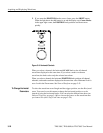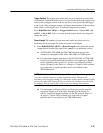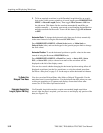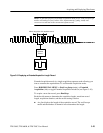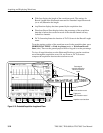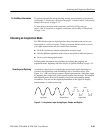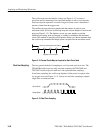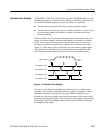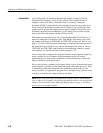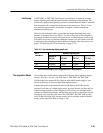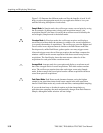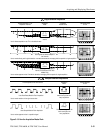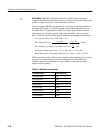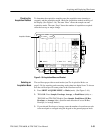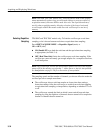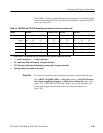
Acquiring and Displaying Waveforms
3–28
TDS 500C, TDS 600B, & TDS 700C User Manual
Your oscilloscope can interpolate between the samples it acquires. Like for
equivalent time sampling, it does so only when it cannot obtain all the real
samples it needs to fill up its waveform record. For instance, setting the
horizontal SCALE to progressively faster acquisition rates leaves progressively
shorter time periods for the waveform record. Therefore, the oscilloscope must
sample faster to acquire the samples (record points) needed to fill up the record.
Eventually the time period established by scale setting does not allow enough
time to get all the real samples needed to fill the record.
The situation just described occurs if you set the Horizontal SCALE knob to a
time base setting that is faster than 10 ns (TDS 600B). (The setting varies with
the number of channels for TDS 500C and TDS 700C models; see Table 3–4 on
page 3–35.) The oscilloscope then interpolates to create the intervening points in
the waveform record. There are two options for interpolation: linear or sin(x)/x.
(TDS 500C and TDS 700C models can also equivalent-time sample to acquire
more samples; see Equivalent-Time Sampling on page 3–27.)
Linear interpolation computes record points between actual acquired samples by
using a straight line fit. It assumes all the interpolated points fall in their
appropriate point in time on that straight line. Linear interpolation is useful for
many waveforms such as pulse trains.
Sin(x)/x interpolation computes record points using a curve fit between the actual
values acquired. It assumes all the interpolated points fall along that curve. That
is particularly useful when acquiring more rounded waveforms such as sine
waves. Actually, it is appropriate for general use, although it may introduce some
overshoot or undershoot in signals with fast rise times.
NOTE. When using either type of interpolation, you may want to set the display
style so that the real samples are displayed intensified relative to the interpolated
samples. The instructions under Select the Display Style on page 3–39 explain
how to turn on intensified samples.
Interpolation



